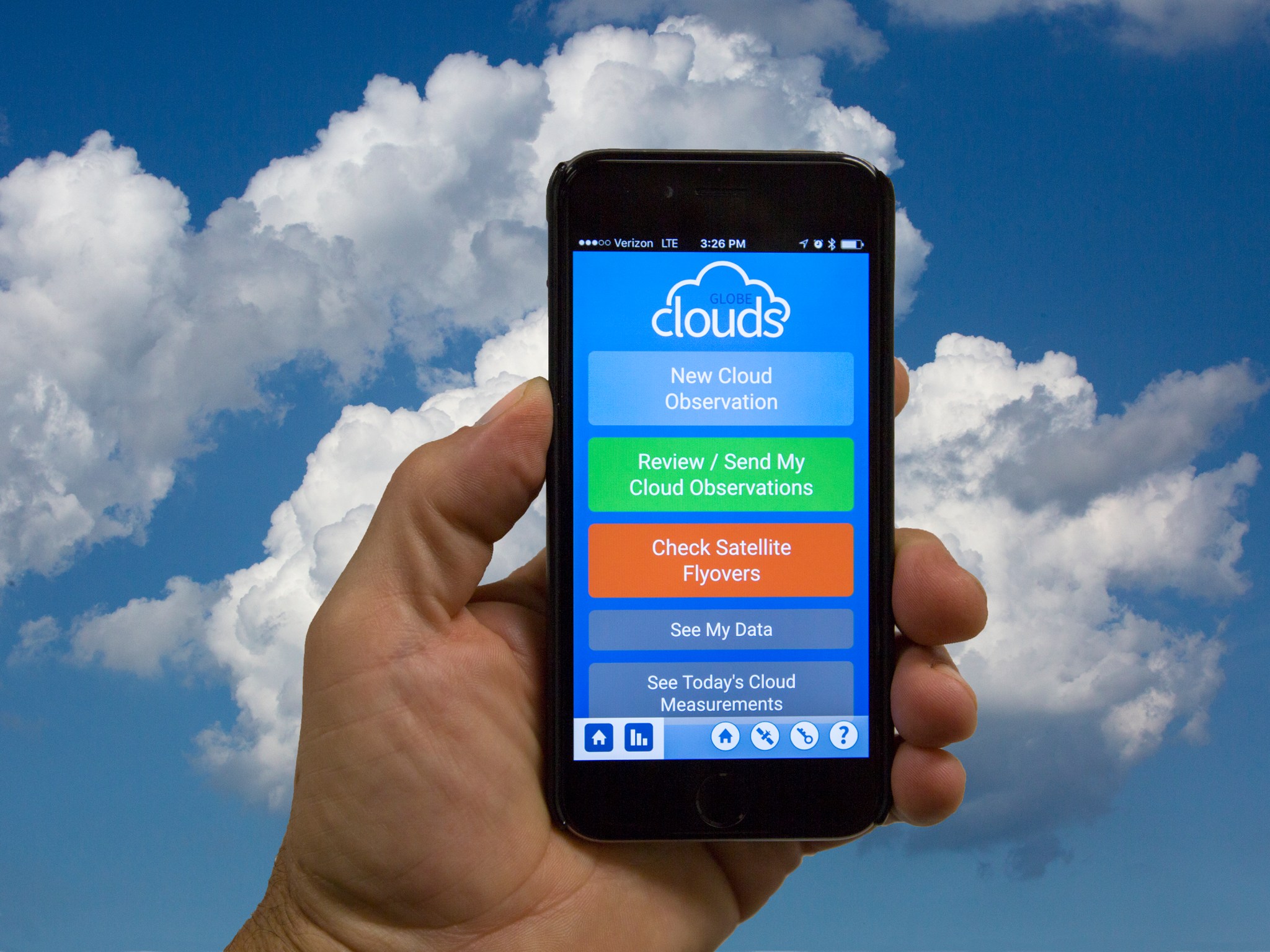GLOBE Observer App Puts the Power of Citizen Science in a Smartphone
In 1442, two centuries before Newton would unveil his law of universal gravitation, Japanese priests began to engage – perhaps unwittingly – in science.
The Shinto priests were quite interested in when Lake Suwa would freeze over and allow the god Takeminakata to cross it – so much so, they began to watch the lake and record the date of its complete ice cover.
The records, published in Nature Scientific Reports, have been diligently kept each year since. They provide centuries of useful climate data and remind us of the importance of the amateur scientist. Today, this work is often labeled as citizen science – when the public participates in scientific research.
This August, NASA and the Global Learning and Observations to Benefit the Environment (GLOBE) program released the GLOBE Observer App for iOS and Android. It encourages the public to make environmental observations that complement NASA satellite observations.
“GLOBE Observer allows anyone to submit observations through an easy-to-use smart phone app,” says Sarah McCrea, an educational outreach coordinator at NASA’s Langley Research Center in Hampton, Virginia. “Additionally, the app features protocols that require little to no additional instrumentation, besides the user and the phone, as well as protocols that a user would find relevant to their everyday life.”
Currently, citizen scientists can use the app’s Cloud Protocol to photograph and make observations about clouds. Their atmospheric presence may sometimes seem mundane and everyday, yet they have a profound impact upon the planet.
NASA physical scientist Lin Chambers, who studies Earth’s atmosphere at NASA Langley, notes that “satellites show us that clouds cover more than 60 percent of the Earth at all times, and their shade cools our planet as a whole. Understanding how clouds will change as atmospheric conditions change is the most important factor in predicting future climate.”
Today’s satellite missions benefit from citizen science work, and in many cases, the work is necessary. The Soil Moisture Active Passive (SMAP) Observatory currently orbits our planet and measures the amount of water in the top two inches of soil. In turn, the GLOBE community often makes reliable soil measurements that are used to validate the accuracy of the SMAP satellite, whose observations are notably relevant to society – it monitors droughts, predicts floods, and improves agricultural productivity.
GLOBE Observer will soon make other features available, such as Land Cover and Mosquito protocols, providing scientists with additional observations that would be too expensive or time consuming to acquire by other means.
The Shinto priests recorded dates of freezing, but across the globe, a Finnish merchant named Olof Ahlbom recorded the dates of thawing along the Torne River, beginning 1693. The river served an important economic role, so the dates of its utility were important for the region. In 1715, Ahlbom was forced to flee from Russian troops, but six years later the Russian occupation ended, and he resumed his record keeping.
The observations made by the Finnish merchants and Shinto priests remain valuable today. Their records began centuries ago, allowing long-term climatic patterns to evolve and exposing potential changes.
And in both cases, there were changes. Following the onset of the Industrial Revolution, the ice on Lake Suwa began to freeze later in the season. As one might suspect, the Torne River began to break apart earlier in the year – and in the last decade, sometimes the river did not freeze at all.
GLOBE Observer encourages modern citizen scientists to make and upload observations like these, which will allow GLOBE to accumulate significantly more Earth science data.
“The app is deliberately designed to be accessible,” says GLOBE Observer coordinator Holli Riebeek Kohl at NASA’s Goddard Space Flight Center in Greenbelt, Maryland. “We’re opening up to a broader audience, a broader community of citizen scientists, which will allow us to get a lot more data from a lot more places.”
Citizen science is an ancient practice whose work is no less relevant today. NASA would argue that it has never been more necessary, and now you can contribute by looking up and observing the sky.
Make a historic contribution. Learn about the GLOBE Observer App here.
























